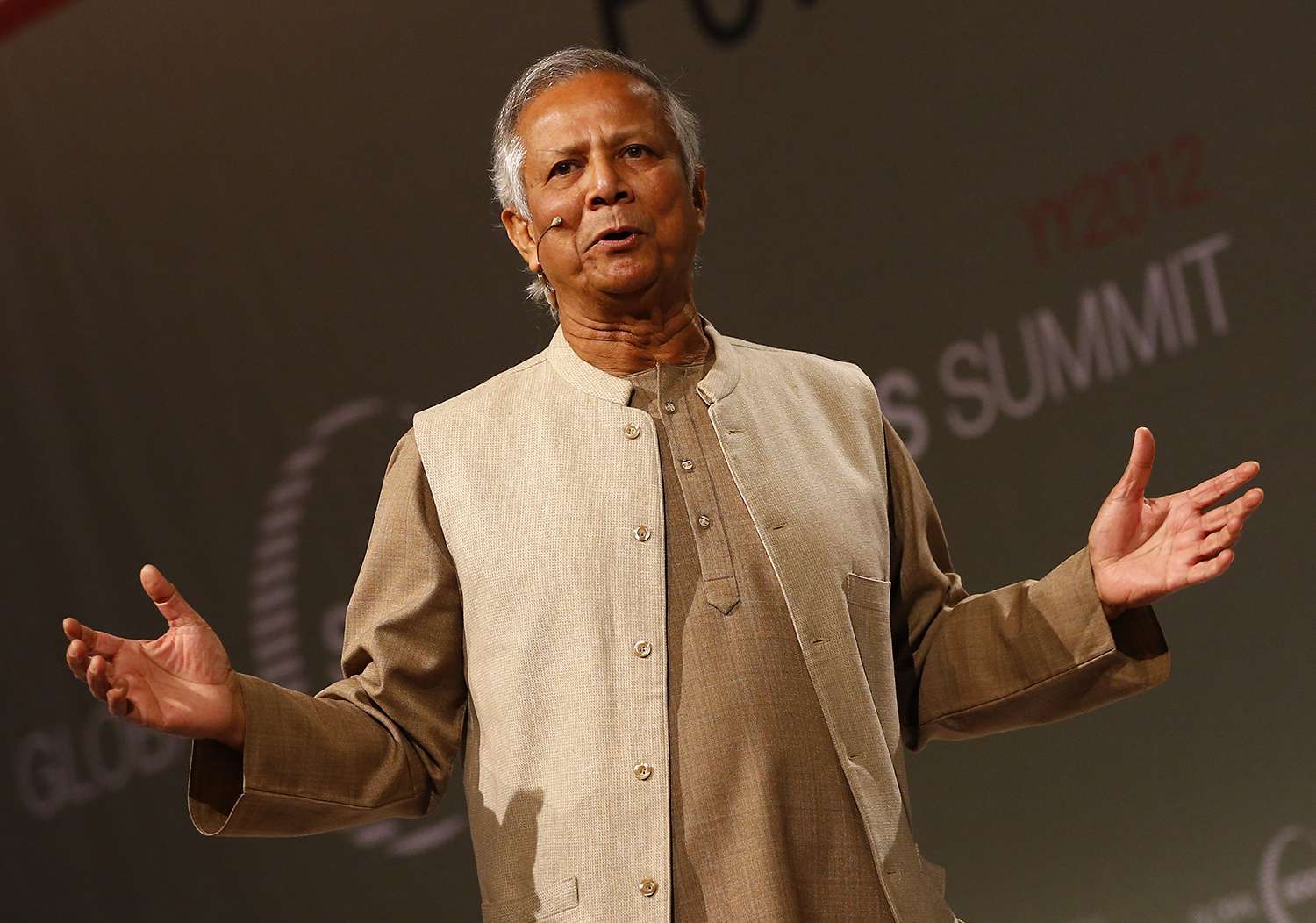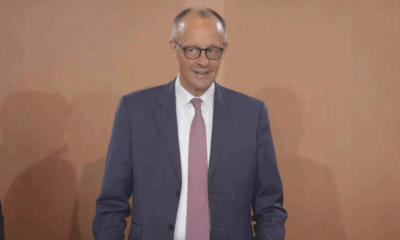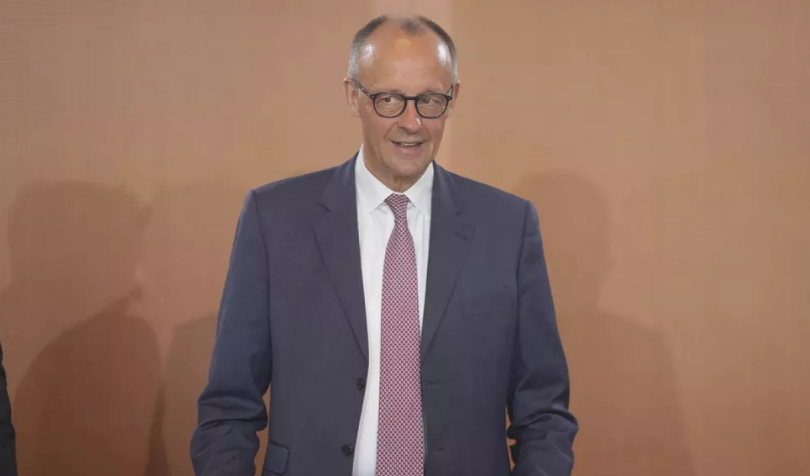News
Nobel Laureate Muhammad Yunus Proposed as Head of Bangladesh’s Interim Government Following Hasina’s Resignation

In a major political upheaval, Nobel Peace Prize laureate Muhammad Yunus has been proposed to head Bangladesh’s interim government, a day after Prime Minister Sheikh Hasina resigned amidst escalating unrest. Nahid Islam, a key organizer of the student protests, announced the proposal in a social media video, stating that student leaders had already discussed the role with Yunus, who agreed to take on the responsibility given the country’s current crisis.
Yunus, celebrated for his pioneering work in microlending which earned him the Nobel in 2006, has called Hasina’s resignation “the country’s second liberation day.” During Hasina’s rule, Yunus faced several corruption charges, which he claims were motivated by political vengeance. His potential leadership comes at a time when the nation is grappling with high unemployment, corruption, and climate change issues.
Hasina’s resignation followed weeks of violent protests triggered by opposition to a quota system for government jobs, which evolved into a broader challenge to her 15-year rule. The unrest culminated in violent clashes, leaving over 100 people dead and hundreds injured. Thousands of demonstrators stormed her official residence and other buildings associated with her party and family, leading to significant instability in the country.
General Waker-uz-Zaman, the military chief, announced that the military would form an interim government, and efforts were being made to restore order. President Mohammed Shahabuddin, after meeting with General Waker-uz-Zaman and opposition politicians, declared that parliament would be dissolved, and a national government would be established to lead to fresh elections.
Amid the chaos, the main opposition Bangladesh Nationalist Party (BNP) urged restraint, emphasizing that the spirit of the revolution should be maintained through due process. Tarique Rahman, the acting chairman of the BNP, called for calm, warning against taking the law into one’s own hands.
Internationally, the United Nations human rights chief, Volker Türk, emphasized that the transition of power in Bangladesh must align with international obligations and be inclusive. The UN’s call for a peaceful and lawful transition underscores the global concern over the unfolding events in Bangladesh.
The unrest has deepened economic distress in Bangladesh, with falling exports and dwindling foreign exchange reserves. General Waker-uz-Zaman assured the public that the military would investigate the crackdown that led to significant bloodshed since mid-July, promising accountability for those responsible.
The path forward remains uncertain, with the military wielding significant influence in a country that has experienced numerous coups since its independence in 1971. While Hasina’s resignation has been a pivotal moment, it remains to be seen whether it will bring an end to the turmoil or mark the beginning of a new chapter of instability.
Crowds continue to protest, ransacking buildings associated with Hasina’s government, highlighting the deep-seated frustrations within the population. As Bangladesh navigates this tumultuous period, the formation of an interim government led by Yunus could be a crucial step towards stabilizing the nation and addressing the grievances of its people.
News
Two Dead, Nearly 200 Injured as PSG Title Celebrations Turn Violent Across France

What began as jubilant celebrations of Paris Saint-Germain’s historic UEFA Champions League victory ended in violence and tragedy in parts of France, with two people killed and nearly 200 injured during street festivities that spiraled out of control.
Authorities confirmed on Sunday that a 17-year-old boy was fatally stabbed in the southwestern town of Dax during a PSG street gathering, while in Paris, a man died after his scooter was struck by a car amid the crowded celebrations. Both incidents are currently under investigation.
The unrest followed PSG’s dramatic win in Munich, where the club secured its first-ever Champions League title, marking a milestone in French football history. While fans across the country took to the streets to celebrate, several areas descended into violence.
According to the French Interior Ministry, a total of 294 people were arrested nationwide as of 2 a.m. Sunday. Of the nearly 200 injured, 21 were police officers—18 of them in Paris alone. One officer remains in a medically induced coma after being struck in the face by a firework.
Interior Minister Bruno Retailleau condemned the violence in a statement on social media. “True PSG fans are celebrating a magnificent achievement. Meanwhile, barbarians have taken to the streets to commit crimes and provoke law enforcement,” he said. “It is unacceptable that people cannot celebrate without being endangered by a violent minority.”
Despite the unrest, the majority of gatherings were peaceful, authorities noted, with large crowds celebrating the historic win in cities including Marseille, Lyon, and Lille.
The PSG squad returned to Paris from Munich on Sunday afternoon aboard a Qatar Airways charter flight, arriving at 4 p.m. The team is expected to continue celebrations in the capital with tens of thousands of fans, under heightened security measures.
The violent turn of events has reignited debate in France over crowd control during major sporting celebrations, and how best to ensure public safety without dampening national enthusiasm.
PSG’s Champions League triumph marks a defining moment for the club, which has long pursued European glory. As the team prepares for a hero’s welcome, officials are urging fans to celebrate responsibly and respect public safety.
News
Ukraine Launches Major Drone Assault on Russian Airfields, Hits Over 40 Strategic Bombers

Ukraine’s Security Service (SBU) has claimed responsibility for a large-scale drone strike on four Russian air bases over the weekend, targeting dozens of strategic bombers across vast swaths of Russian territory — from Siberia to the Arctic.
According to Ukrainian officials, the operation, codenamed “Spiderweb” (Pavutyna), was launched on June 1 and struck 41 long-range bombers stationed at airfields in Russia’s Ryazan, Ivanovo, Irkutsk, and Murmansk regions. The attack is being hailed by Kyiv as one of its most ambitious and far-reaching strikes since the beginning of Russia’s full-scale invasion.
“Enemy strategic bombers are burning en masse in Russia,” a senior SBU official said, noting that the operation was specifically designed to cripple Moscow’s airstrike capabilities. “This is a large-scale special operation aimed at destroying enemy bomber aircraft.”
The four airfields targeted were Dyagilevo in the Ryazan region, Ivanovo in central Russia, Belaya air base in Irkutsk — over 4,000 kilometers from the front lines — and Olenya air base on the Kola Peninsula near the Arctic, roughly 2,000 kilometers from Ukraine’s border.
Ukrainian officials described the complex logistics of the operation, which involved covertly transporting drones deep into Russian territory, hiding them until the time of launch, and remotely executing the strikes. While specific details remain classified, Ukraine previously revealed it had developed drones with a flight range of up to 3,000 kilometers, enabling long-range operations like this.
Satellite imagery analyzed after the attack shows the presence of several high-value Russian aircraft types at the affected bases, including the Tu-95, Tu-22M3, Tu-160, and A-50 radar planes. These aircraft have been central to Russia’s long-range missile campaign against Ukraine.
The Tu-22M3, for example, is capable of carrying Kh-22 and Kh-32 cruise missiles at speeds exceeding Mach 4. The Tu-95, a Cold War-era bomber once designed to carry nuclear weapons, has been retrofitted to launch conventional cruise missiles. The A-50 aircraft provides airborne radar surveillance and target coordination for Russian forces.
The scale of the strike underscores Ukraine’s growing long-range capabilities and signals a shift in Kyiv’s strategy to disrupt Russian air operations at their source. President Volodymyr Zelenskyy said he had held meetings with the Ministries of Defense and Foreign Affairs, along with the General Staff and SBU, to coordinate further defense and counter-offensive planning.
There has been no immediate official response from Moscow regarding the extent of damage caused.
News
German Chancellor Merz to Meet President Trump in Washington Amid Global Tensions
-

 Business1 year ago
Business1 year agoSaudi Arabia’s Model for Sustainable Aviation Practices
-

 Business1 year ago
Business1 year agoRecent Developments in Small Business Taxes
-

 Politics1 year ago
Politics1 year agoWho was Ebrahim Raisi and his status in Iranian Politics?
-

 Business11 months ago
Business11 months agoCarrectly: Revolutionizing Car Care in Chicago
-

 Business11 months ago
Business11 months agoSaudi Arabia: Foreign Direct Investment Rises by 5.6% in Q1
-

 Technology1 year ago
Technology1 year agoComparing Apple Vision Pro and Meta Quest 3
-

 Politics1 year ago
Politics1 year agoIndonesia and Malaysia Call for Israel’s Compliance with ICJ Ruling on Gaza Offensive
-

 Sports10 months ago
Sports10 months agoKeely Hodgkinson Wins Britain’s First Athletics Gold at Paris Olympics in 800m


























